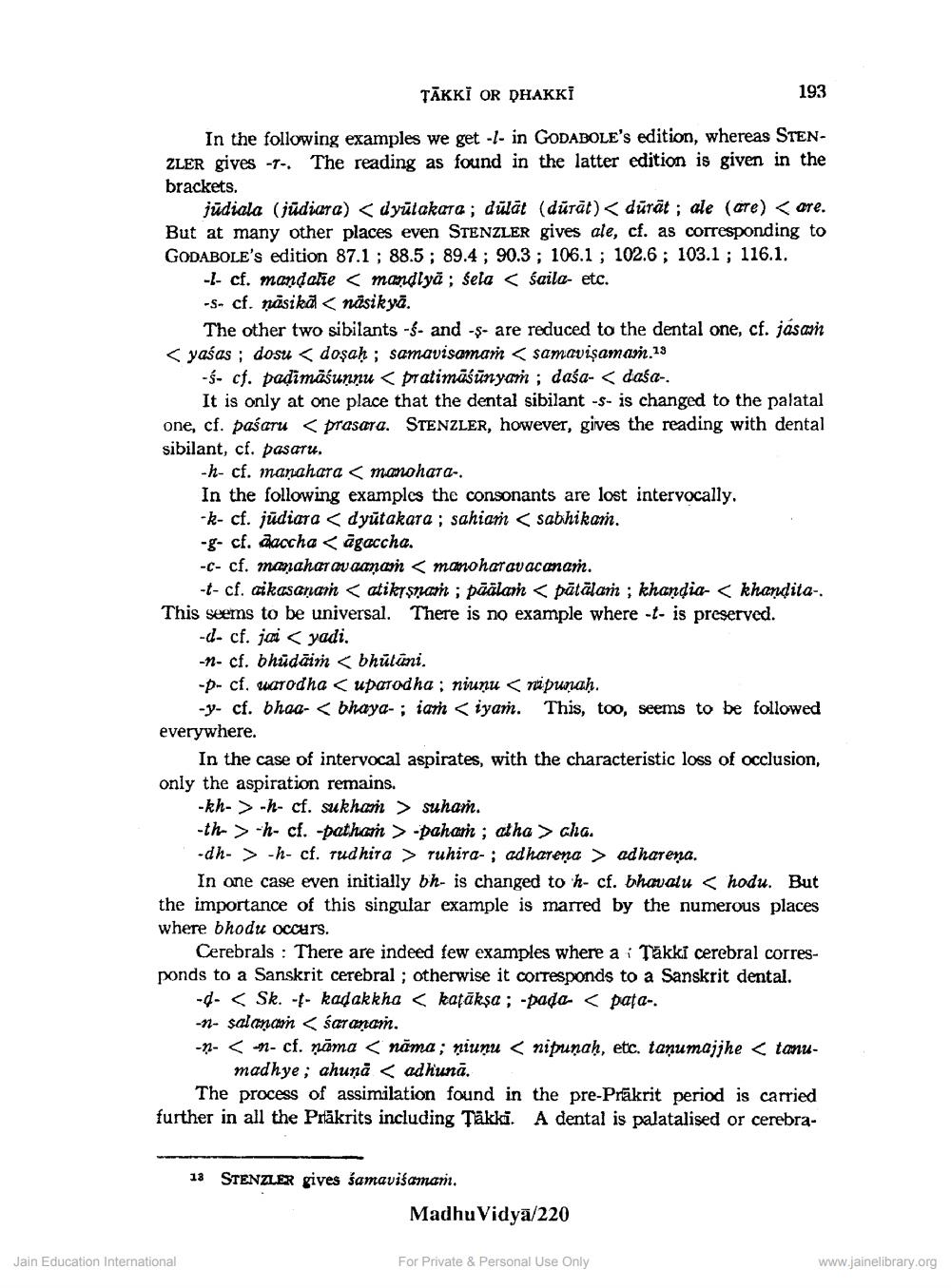________________
TĀKKI OR DHAKKI
193
In the following examples we get -l- in GODABOLE's edition, whereas STENZLER gives -1-. The reading as found in the latter edition is given in the brackets.
jūdiala (jūdiara) < dyütakara; dülāt (dūrāt) < dūrāt ; ale (ore) < ore. But at many other places even STENZLER gives ale, cf. as corresponding to GODABOLE's edition 87.1 ; 88.5 ; 89.4 ; 90.3; 106.1 ; 102.6 ; 103.1 ; 116.1.
-- cf. mandalie < mandlyā ; sela < saila- etc. -S. cf. nāsika < násikyā.
The other two sibilants --- and --- are reduced to the dental one, cf. jasan < yasas ; dosu < doşah ; samavisaman < samavişamam.18
- Ś- cf. padimasunnu < pratimāśünyam ; daśa- < daśa-.
It is only at one place that the dental sibilant -s- is changed to the palatal one, cf. pašaru < prasara. STENZLER, however, gives the reading with dental sibilant, cf. pasaru.
-h-cf. manahara< manohara.. In the following examples the consonants are lost intervocally. -k- cf. jūdiara < dyūtakara ; sahian < sabhikan. -g- cf. daccha < ägaccha. -C- cf. manaharavaanam <manoharavacanam.
-- cf. cikasanaın <atikrinan ; päälan < pātälan ; khandia <khandita-. This seems to be universal. There is no example where -- is preserved.
-- cf. jai < yadi. -- cf. bhüdāim < bhūtāni. -p-cf. warodha < uparodha; niuņu <mapunah.
-y- cf. bhaa- < bhaya- ; iar <iyam. This, too, seems to be followed everywhere.
In the case of intervocal aspirates, with the characteristic loss of occlusion, only the aspiration remains.
-kh->-h- cf. sukhan > suhań. -th->-h- cf. -pathan > -pahar; atha > cha. -dh- > -N- cf. Tudhira > Tuhira-; adharena > adharena.
In one case even initially bh- is changed to h- cf. bhavalu < hodu. But the importance of this singular example is marred by the numerous places where bhodu occurs.
Cerebrals : There are indeed few examples where a i Takki cerebral corresponds to a Sanskrit cerebral ; otherwise it corresponds to a Sanskrit dental.
--- < Sk. -- kadakkha < katāksa ; -pada- < pata-. -n- salanan < saranam. -n- < -n- cf. nama < năma; niunu < nipunaḥ, etc. tanumajjhe < tanu
madhye, ahună < adhuna. The process of assimilation found in the pre-Präkrit period is carried further in all the Prakrits including Täkki. A dental is palatalised or cerebra
13 STENZLER gives samavisamam.
Madhu Vidyā/220
Jain Education International
For Private & Personal Use Only
www.jainelibrary.org




